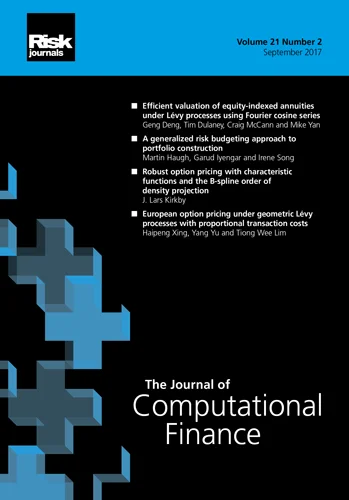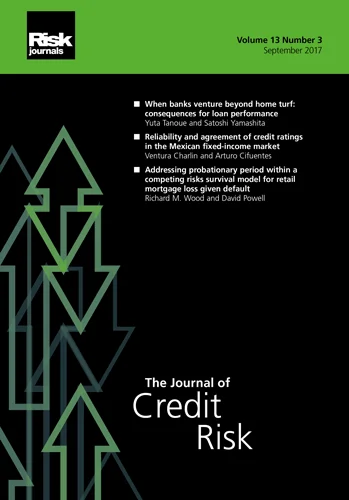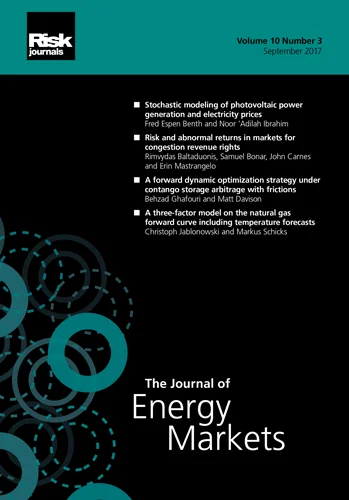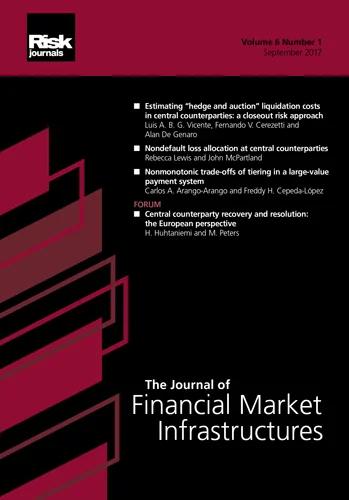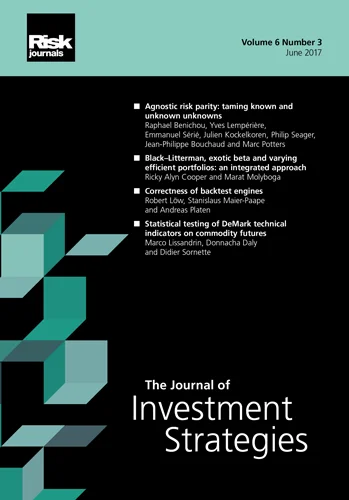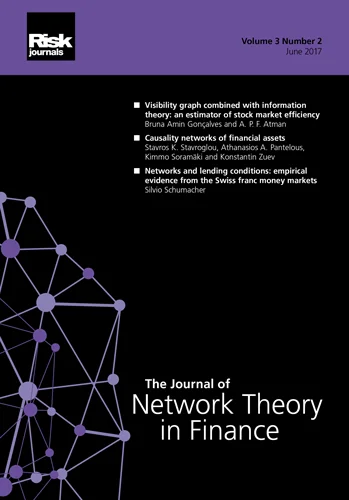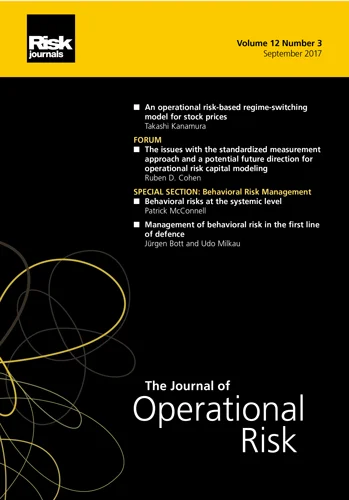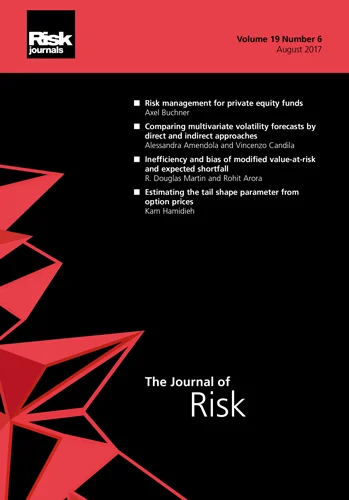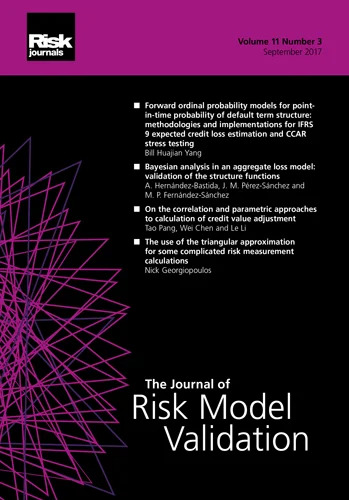Journal of Computational Finance
ISSN:
1755-2850 (online)
Editor-in-chief: Christoph Reisinger
About this journal
The Journal of Computational Finance is an international peer-reviewed journal dedicated to advancing knowledge in the area of financial mathematics. The journal is focused on the measurement, management and analysis of financial risk, and provides detailed insight into numerical and computational techniques in the pricing, hedging and risk management of financial instruments.
The journal welcomes papers dealing with innovative computational techniques in the following areas:
- Numerical solutions of pricing equations: finite differences, finite elements, and spectral techniques in one and multiple dimensions.
- Simulation approaches in pricing and risk management: advances in Monte Carlo and quasi-Monte Carlo methodologies; new strategies for market factors simulation.
- Optimization techniques in hedging and risk management.
- Fundamental numerical analysis relevant to finance: effect of boundary treatments on accuracy; new discretization of time-series analysis.
- Developments in free-boundary problems in finance: alternative ways and numerical implications in American option pricing.
Abstracting and Indexing: Scopus; Web of Science - Social Science Index; MathSciNet; EconLit; Econbiz; and Cabell’s Directory
Journal Metrics:
Journal Impact Factor: 0.5
5-Year Impact Factor: 0.7
CiteScore: 0.9
Latest papers
Policy gradient methods for optimal trade execution in limit order books
The authors investigate applications of policy gradient methods for the optimal execution of an asset position via limit orders.
An efficient numerical method for pricing American options and their Greeks under the two-asset Kou jump-diffusion model
This paper presents an efficient numerical method for solving a two-dimensional time-dependent PIDCP for American-style options under the two-asset Kou jump-diffusion model.
Robust financial calibration: a Bayesian approach for neural stochastic differential equations
This paper offers a Bayesian framework for the calibration of financial models using neural stochastic differential equations.
Deep self-consistent learning of local volatility
This paper offers an algorithm for calibrating local volatility from market option prices using deep self-consistent learning, by approximating both market option prices and local volatility using deep neural networks.
Finite-difference solution ansatz approach in least-squares Monte Carlo
This paper presents a novel technique, which is simple yet effective, to improve the accuracy and stability of the least-squares Monte Carlo method.
Machine learning and a Hamilton–Jacobi–Bellman equation for optimal decumulation: a comparison study
This paper ascertains a decumulation strategy for the holder of a defined contribution pension plan with an approach based on neural network optimization.
Total value adjustment in a multicurrency framework with stochastic exchange rates and mean-reversion spreads
The authors employ portfolio replication and dynamic hedging techniques to derive models for pricing financial derivatives in multicurrency markets and in the presence of counterparty credit risk.
On deep portfolio optimization with stocks, bonds and options
The authors put forward a neural-network machine learning algorithm for time-inconsistent portfolio optimization.
Convexity adjustments à la Malliavin
This paper puts forward a novel means to approximate convexity adjustments in a general interest rate model using Malliavin calculcus.
An explicit scheme for pathwise cross valuation adjustment computations
The authors put forward a simulation/regression scheme for a class of anticipated backward stochastic differential equations, where the coefficient entails a conditional expected shortfall of the martingale part of the solution.
A flexible commodity skew model with maturity effects
The authors propose an extension to the Andersen commodity curve and calibrate the model to market data for West Texas Intermediate crude oil and for natural gas.
Pricing time-capped American options using a least squares Monte Carlo method
This paper uses a modified least squares Monte Carlo method to price time-capped American options.
Pricing American options under irrational behavior in a Markov regime-switching model with a finite-element method
The authors investigate the problem of pricing American options under an irrational strategy, putting forward a method to negate this problem and demonstrate the performance of this model against alternatives.
Deep equal risk pricing of illiquid derivatives with multiple hedging instruments
The authors propose the using equal risk pricing for market-consistent valuation of illiquid financial derivatives, transferring information in liquid hedging strategy prices into the price of the illiquid derivative.
On the boundary conditions adopted in stochastic volatility option pricing models
The authors recommend boundary conditions that should be adopted when pricing European- and American-style options under the Heston model.
Multiperiod static hedging of European options
The authors extend the approach of Carr and Wu (2014) to cover options over multiple short maturities and demonstrate a practical application of their proposed method.
Option pricing under the normal stochastic alpha–beta–rho model with Gaussian quadratures
The authors integrate a Gaussian quadrature for option pricing under the normal alpha–beta–rho model, which they demonstrate to calculate accurate, arbitrage-free price and delta.
Pricing high-dimensional Bermudan options using deep learning and higher-order weak approximation
The authors propose a deep-learning-based algorithm for high-dimensional Bermudan option pricing with the novel feature of discretizing the interval between early-exercise dates using a higher-order weak approximation of stochastic differential equations.
Clustering market regimes using the Wasserstein distance
The authors apply Wasserstein distance and barycenter to the k-means clustering algorithm, validating their proposed method both qualitatively and quantitatively.
An iterative copula method for probability density estimation
This paper puts forward a technique with which to reconstruct a probability density function from an n-dimensional probability distribution sample and provide a theoretical justification for the proposed method.
